OneUp Wave Flat Pedals
Stated Weight (pair, with pins): 355 g
Blister’s Measured Weight: 180 & 181 g
Stated Platform Size (width x length): 107 x 110 mm
Blister’s Measured Platform Size (usable platform area, width x length): 107 x 110 mm
MSRP: $160 USD / $200 CAD
Bolted To: Kavenz VHP 16 V7 & Revel ReRun
Reviewer: 6’, 160 lb / 183 cm, 72.6 kg
Test Locations: Washington
Test Duration: 4 months
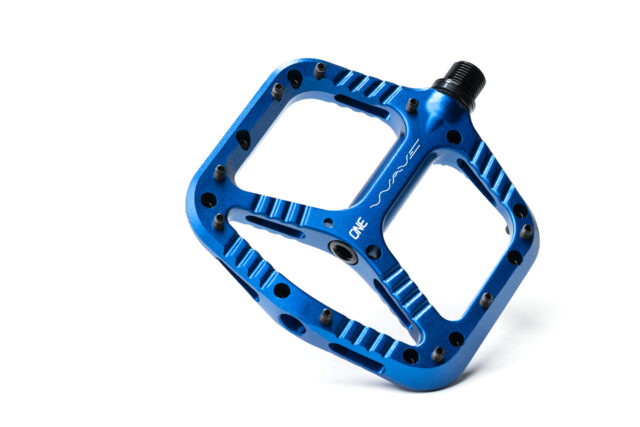
Intro
OneUp has had some big releases recently, from a new version of their carbon handlebars to their new Clip Pedals, both of which we’re currently testing. But now there’s a new flat pedal in the mix too, and it takes a much different approach than any other pedals we’ve tested to date.
While OneUp’s very popular composite and aluminum pedals have historically used a convex shape that prioritizes thin leading edges, the new and aptly named Wave pedals blend a concave front half with a convex rear, and it’s unlike anything we’ve seen before.
Design
Personally, I’ve never gotten along with convex pedal shapes. While they often promote a heels-down riding position and have nicely thin leading edges, convex designs often feel like they depend too much on the pedal pins to create grip, leading to some foot retention challenges when trails get really rough. Concave pedals typically seem to cradle the forefoot more effectively, and I feel like they create more grip under load by allowing the shoe to sink more into the pedal platform. But high levels of concavity can put strain on your arch when trying to drop your heels, given that the concavity “kicks up” the trailing edge of the pedal.
Concave and convex pedal bodies each have their fans, and OneUp’s existing convex shapes have been very popular, but OneUp’s Wave pedal aims to combine the benefits of concave and convex designs. The Wave’s pedal body has a concave portion ahead of the spindle to create more grip by hugging the ball of the foot. Behind the spindle, the shape turns convex, creating a slope toward the trailing edge of the pedal that OneUp says encourages a heels-down riding position. This combination of pedal designs gives the Wave pedal its patented shape.
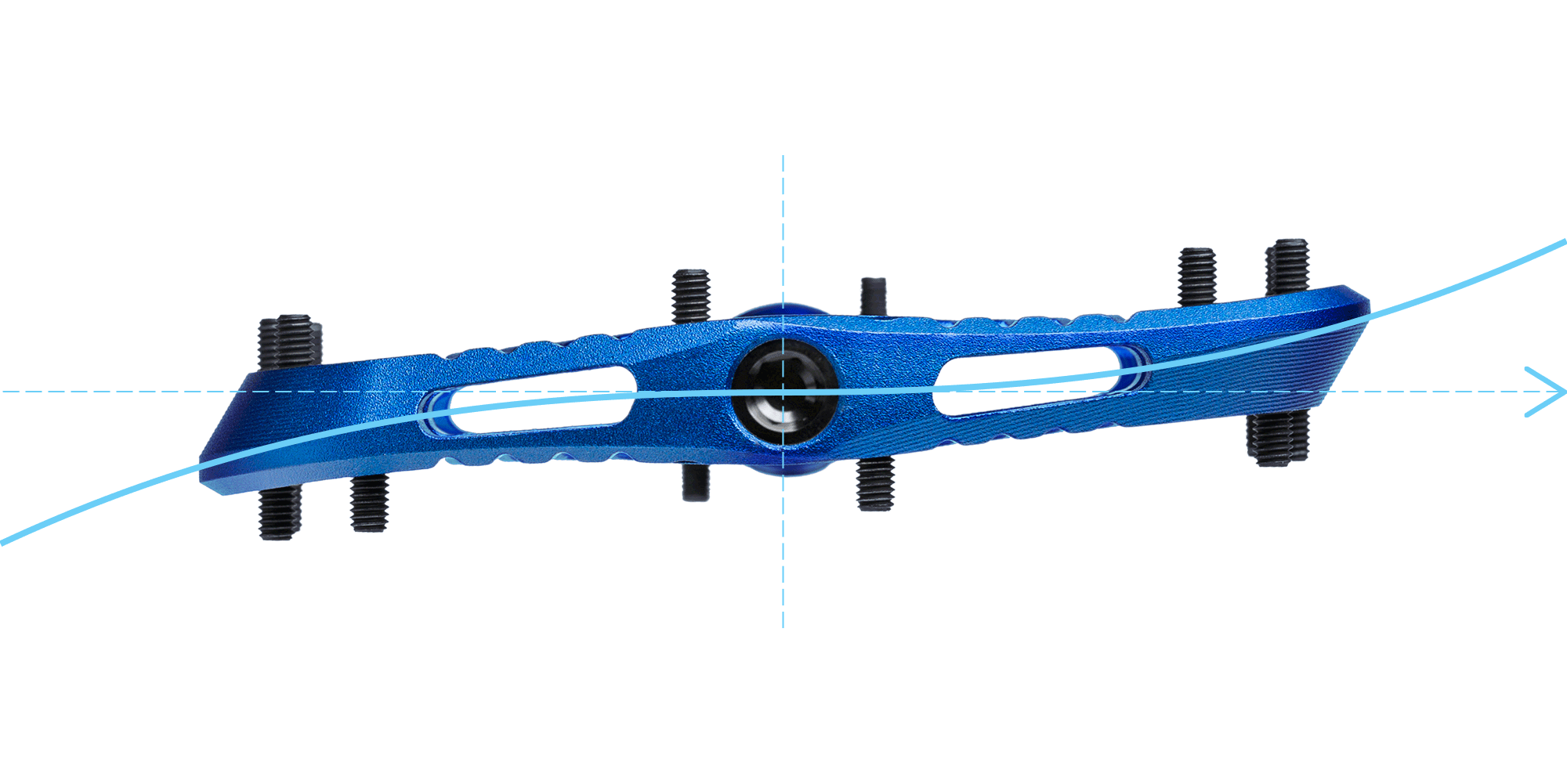
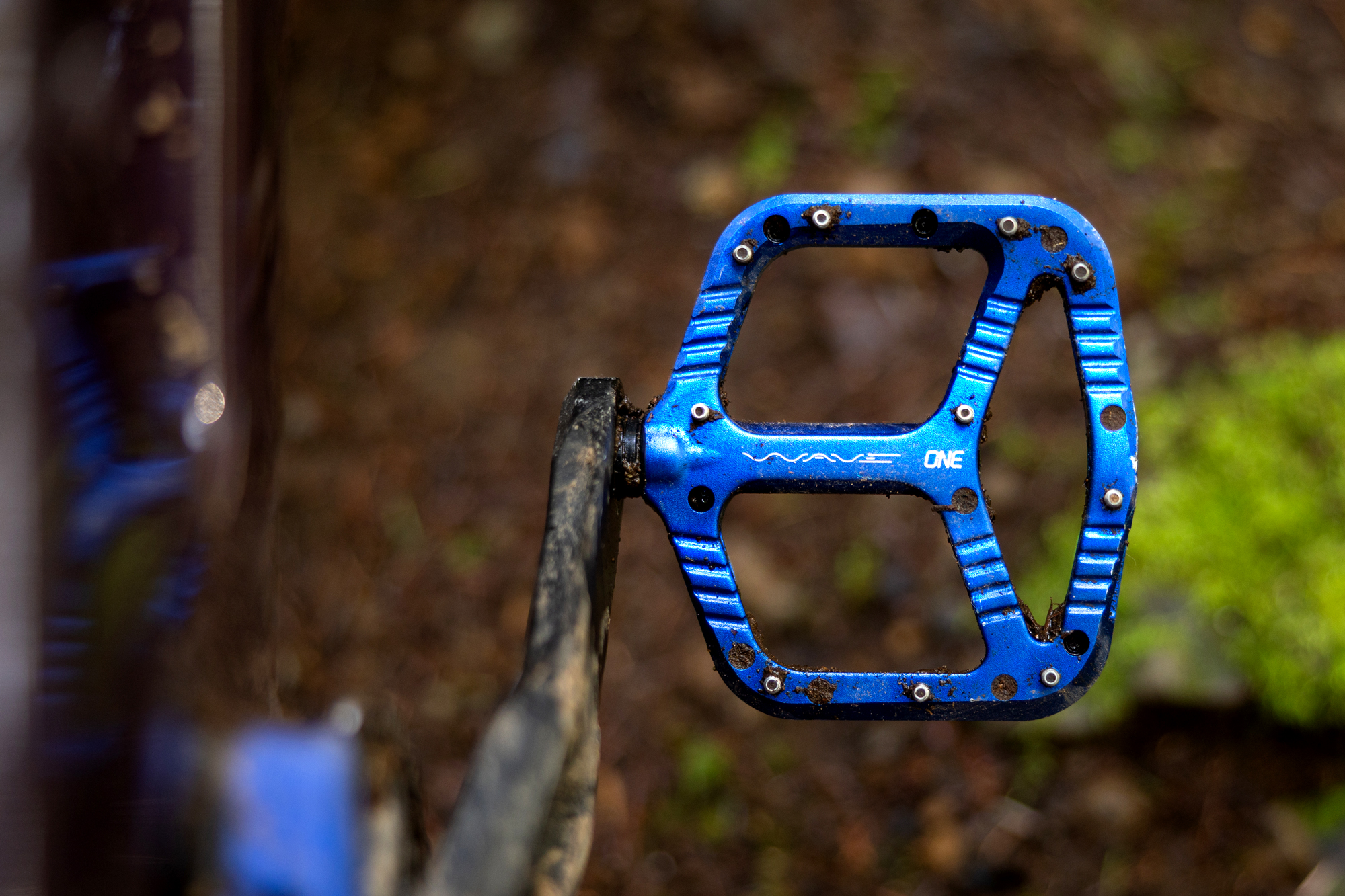
The Wave’s aluminum pedal body isn’t as massive as something like my preferred Chromag Dagga pedals (which are a whopping 120 mm wide by 110 mm long), but still ample at 107 mm wide by 110 mm long. It still manages to be fairly thin, too, despite foregoing the bearing bulge found on their existing aluminum flat pedal. Much of this is afforded by the new axle system, which OneUp says shares bearings, bushings, and seals with their Clip Pedal. They also say that home service is quite straightforward.
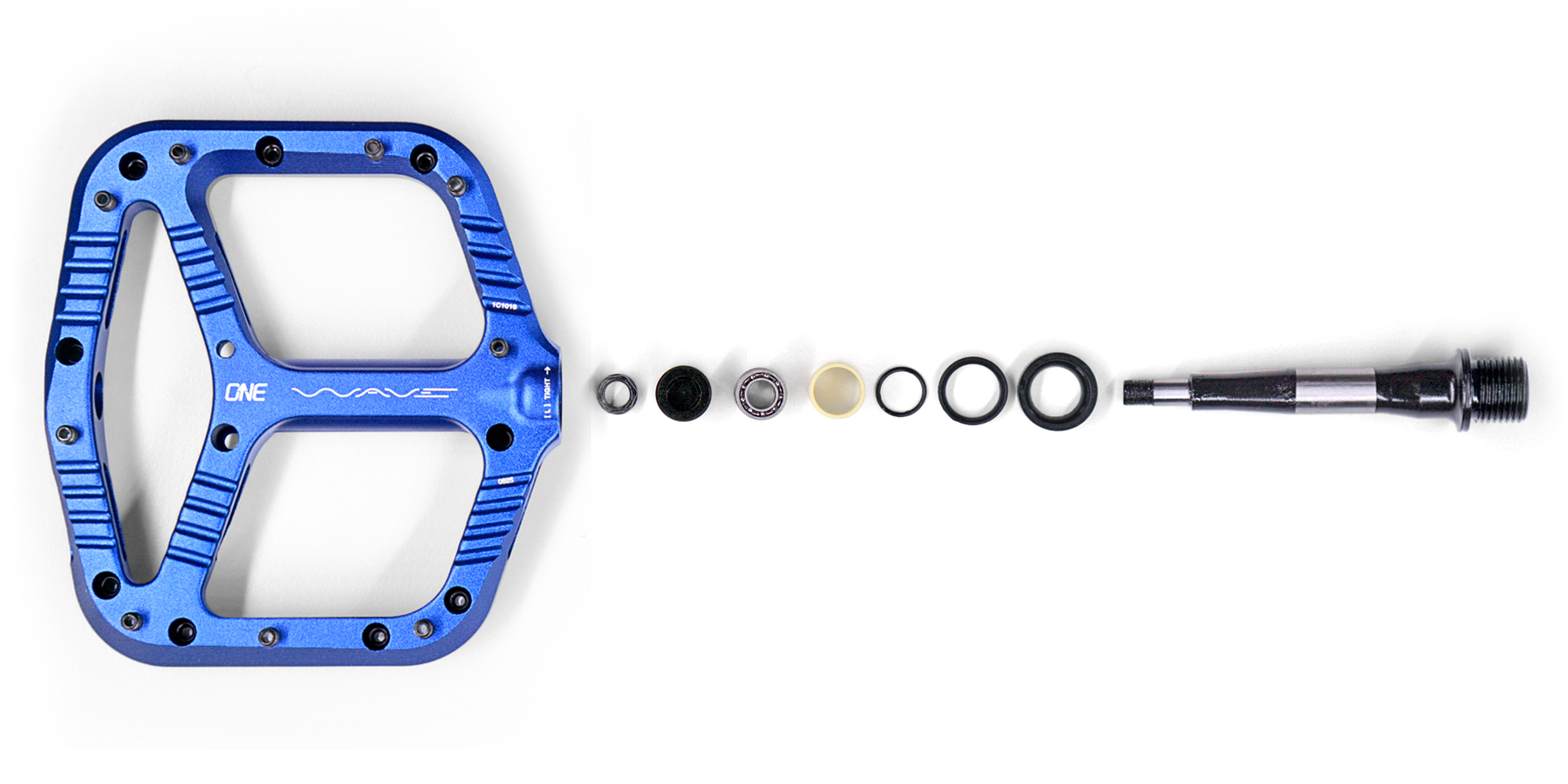
FULL REVIEW
I’ve historically fallen into the “concave is better” camp when it comes to flat pedals, preferring the more locked-in feel and easier foot locating that a concave shape can provide. OneUp, however, has stuck to its guns in only making convex pedals — that is, until the Wave pedal showed up, claiming to merge the upsides of both concave and convex designs.
Did OneUp find a new frontier in flat pedal design with the Wave? Even after four months of testing, the answer isn’t a simple one. Read on to find out how it all shook out on the trail.
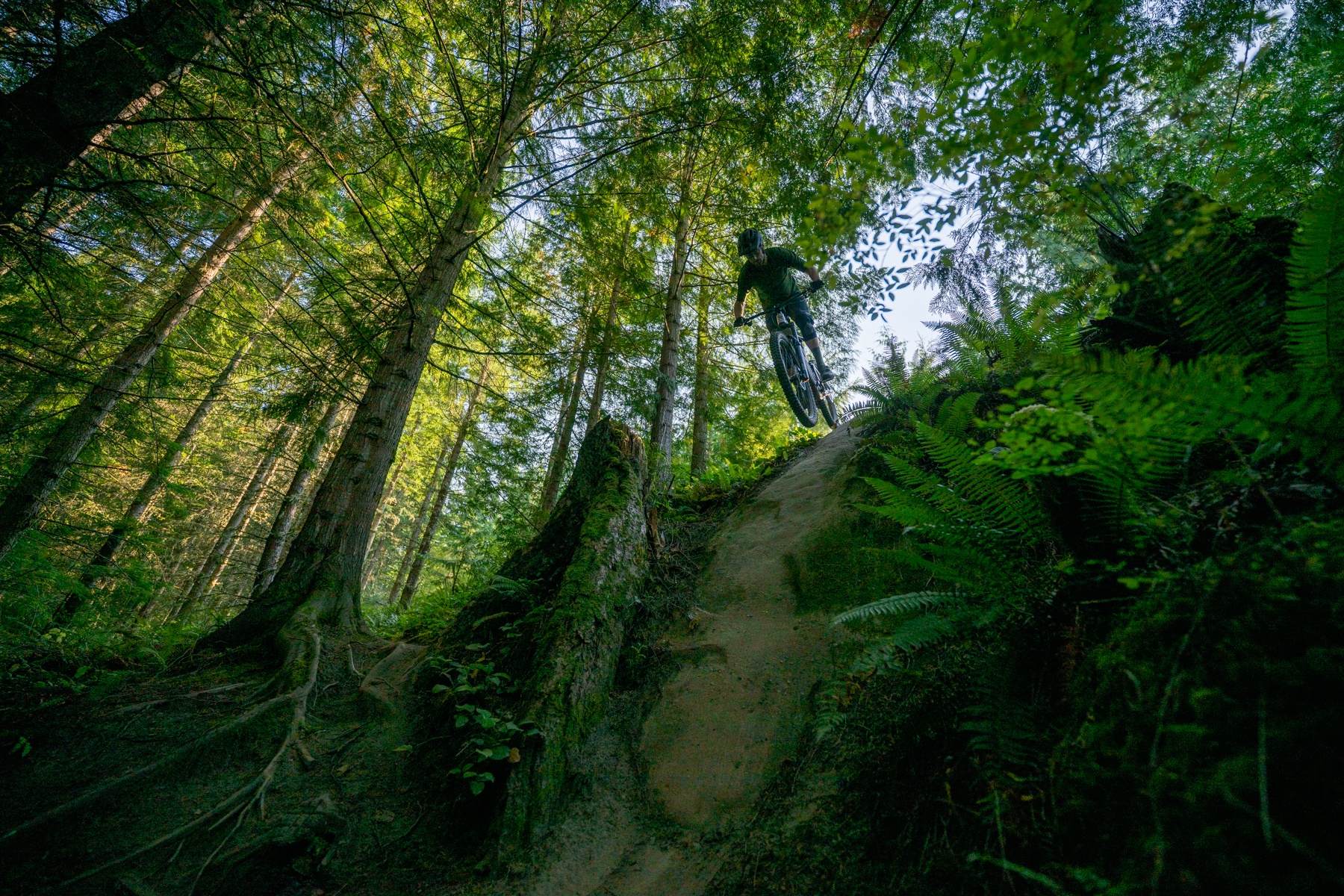
On the Trail
The Wave platform shape looks weird, but as I outlined in my Flash Review, it feels surprisingly normal on the trail. I’ve ridden them extensively both in the bike park and on longer pedal-powered rides, and in both situations I’ve been particularly impressed by how well they support the natural shape of my foot. While other convex pedals I’ve tried seem to prefer a very forward foot position, the concave forward portion of the Waves jives a bit better with my preferred position of having the ball of my foot just ahead of the axle. The convex portion of the pedal behind the axle then nicely follows the contour of my arch, providing a little bit of extra support and, at least in my experience, reducing how much foot fatigue I feel over the course of bigger days on the bike. This is one area where I do struggle on occasion with particularly concave pedals, as they tend to create a bit of a pressure point where my shoe bends around the edges of the platform, which are effectively elevated compared to the center portion.
The unique shape does mean that the Waves have a preferred foot location, with the ball of the foot located squarely in the concave portion of the pedal ahead of the axle. In situations where I’d drop a foot and put it back on, there were some occasions where I ended up placing the ball of my foot farther back over the axle, and the pedals felt a little unsettled until I found my proper foot placement again. This is something I’ve experienced with convex pedals before because of how much they seem to prefer being tucked into the arch of the foot, and while the Waves weren’t any worse than most other convex pedals in that regard, they didn’t quite forgive suboptimal foot placement in the way that some more concave pedals can.
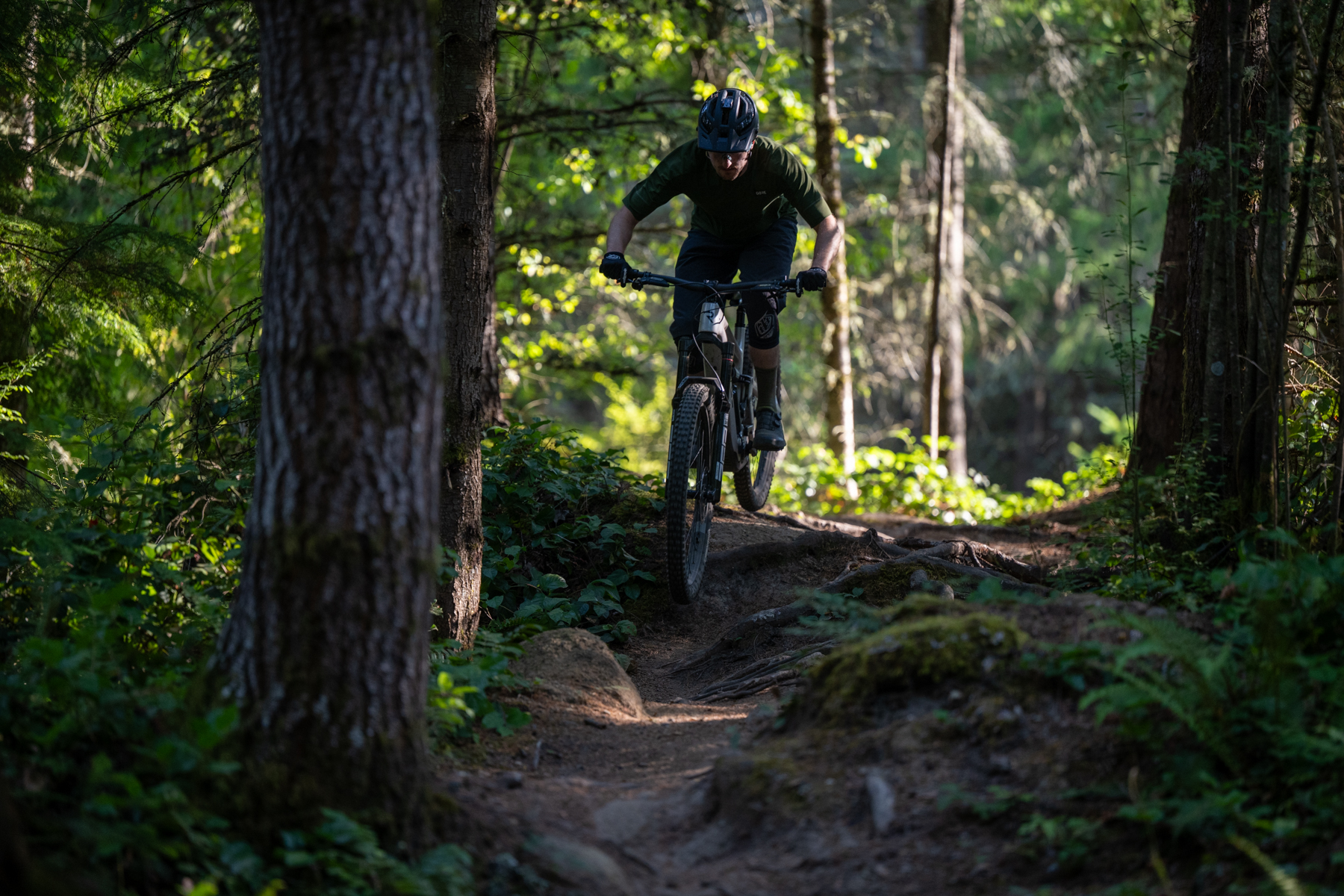
While the platform shape has benefits in supportiveness, the impact on all-out grip is a bit more mixed. Particularly when climbing, I found that my feet tended to dance a bit on the pedals when slightly unweighted. When deliberately putting more weight through my feet, the Waves seemed to grip a lot more tenaciously. That “on/off” sensation took a bit of getting used to, particularly when swapping between the Waves and more aggressive concave pedals, and I’m of two minds about it. On one hand, it made for easy foot readjustment when needed, and the pedals still delivered high levels of grip when I was pushing into the bike or otherwise putting adequate pressure through my feet. On the other hand, I found that I had to pay a bit more attention to how and when I was unweighting the bike, and there was a bit of an adjustment period as I switched back and forth with more tenacious fully concave pedals.
My best guess as to why this was happening comes down to the mixed concave / convex shape. The small concave section in front of the axle allows my shoe to sink into the platform a bit more than a fully convex pedal, but that concave section is fairly small, meaning that it doesn’t bring the same shoe-grabbing tenacity that a deeply concave pedal can offer. As mentioned above, though, the benefit over a deeply concave pedal is the better overall foot support.
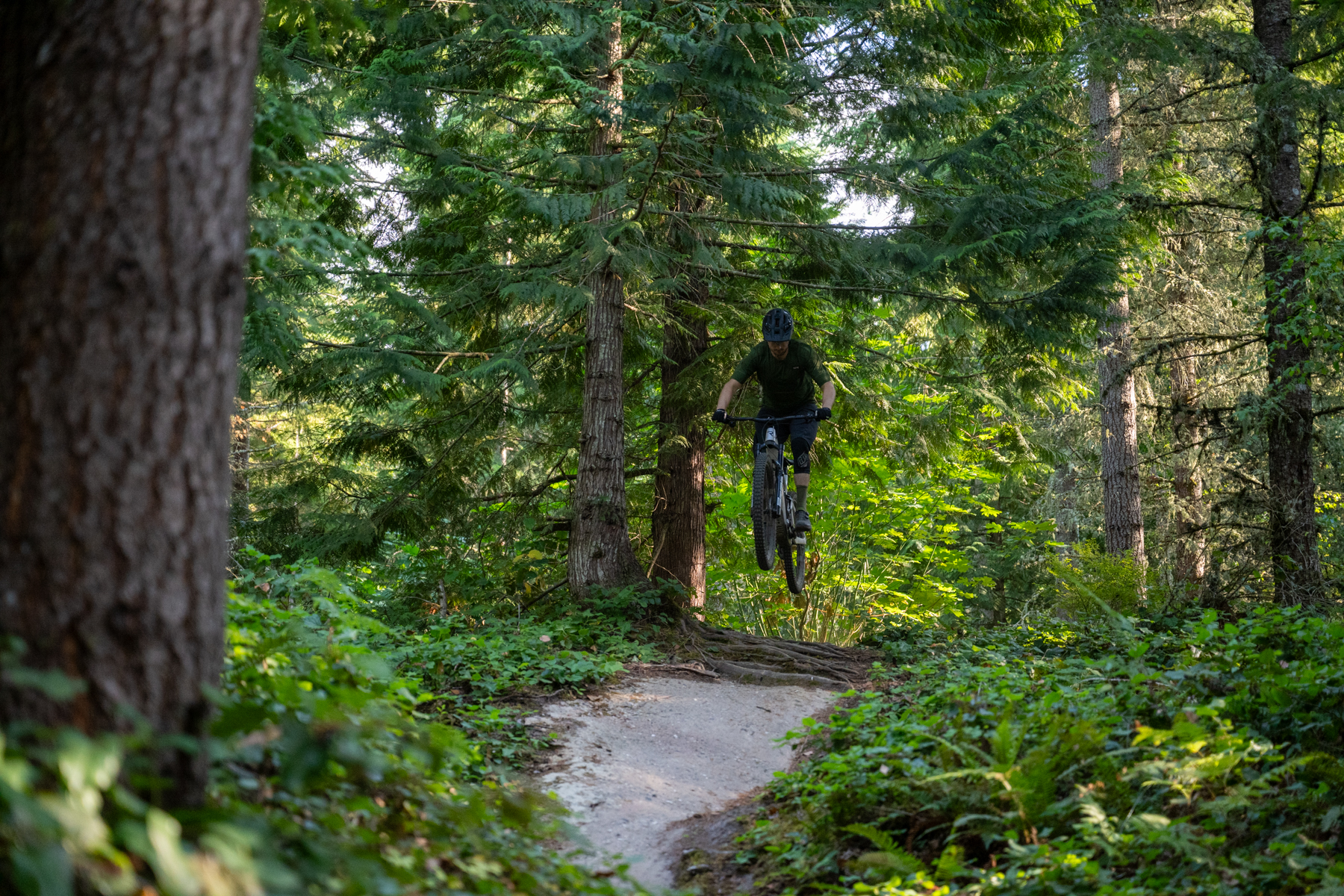
While the shape of the pedal doesn’t create quite the same grip that a fully concave pedal can, I’m a pretty big fan of the pin design on the Waves. They’re stout as compared to some of the more needle-shaped pins out there that are more susceptible to bending, and seem less eager to slash up shins and calves as compared to those sharper designs, too. I generally prefer fully threaded pins like the ones on the Waves because I find that the texture provided by the threads helps hang onto the rubber of my shoes.
I’d be remiss not to also mention one of the big benefits of more convex pedal designs — the thin leading edges. Especially as compared to blocky concave pedals like the Deity T-Mac or Chromag Dagga, the Wave pedals do a much better job of dodging obstacles on the trail and otherwise avoiding pedal strikes. I don’t have a huge issue with pedal strikes on my local trails, but this could be a huge selling point for folks who live in rockier, chunkier locales. It also helps that OneUp has designed the Wave with well-finished, smooth edges that further resist hanging up when impacts do happen.
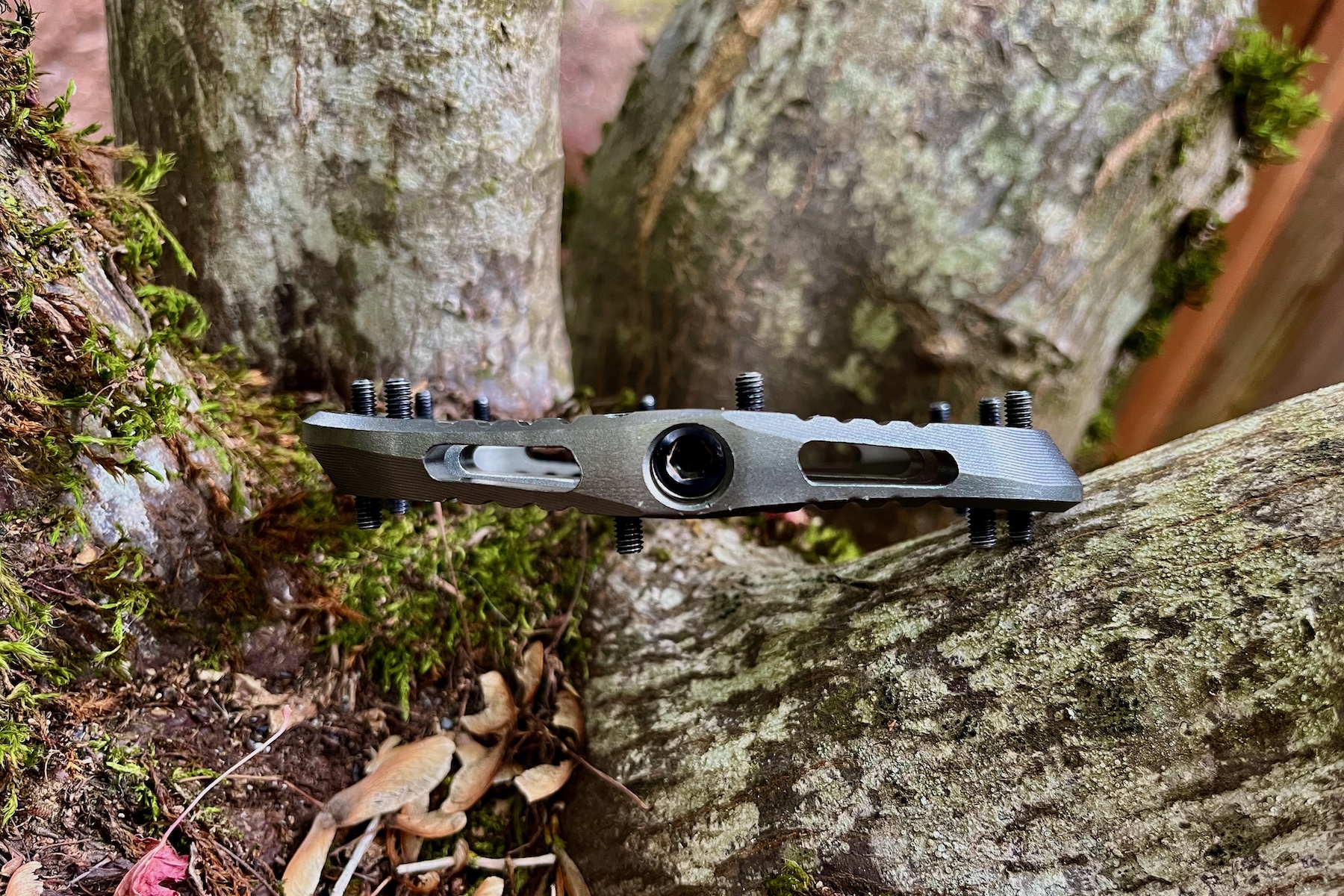
Durability
The Waves have been rock solid from a durability perspective, and I have high hopes for their longevity for several reasons.
First, the thin design of the pedals not only effectively dodges obstacles, but is machined to have both smooth edges and no machined voids in the leading or trailing edges. Other pedals with more intricate (and delicate) machining work, or sharp edges, can be more prone to hanging up on obstacles or bending.
Secondly, the internals are burly and well sealed. They use three bearings per pedal to help distribute loads (lots of other pedals come with just one), plus an inboard igus bushing, along with inner and outer seals to keep everything protected. My test pair has exhibited far less water or dirt ingress than other pedals in my fleet would after an equivalent amount of riding.
And lastly, OneUp makes servicing easy and affordable. They include the required service tool (a thin-walled socket) and a full rebuild kit covering both pedals only costs $21 USD.
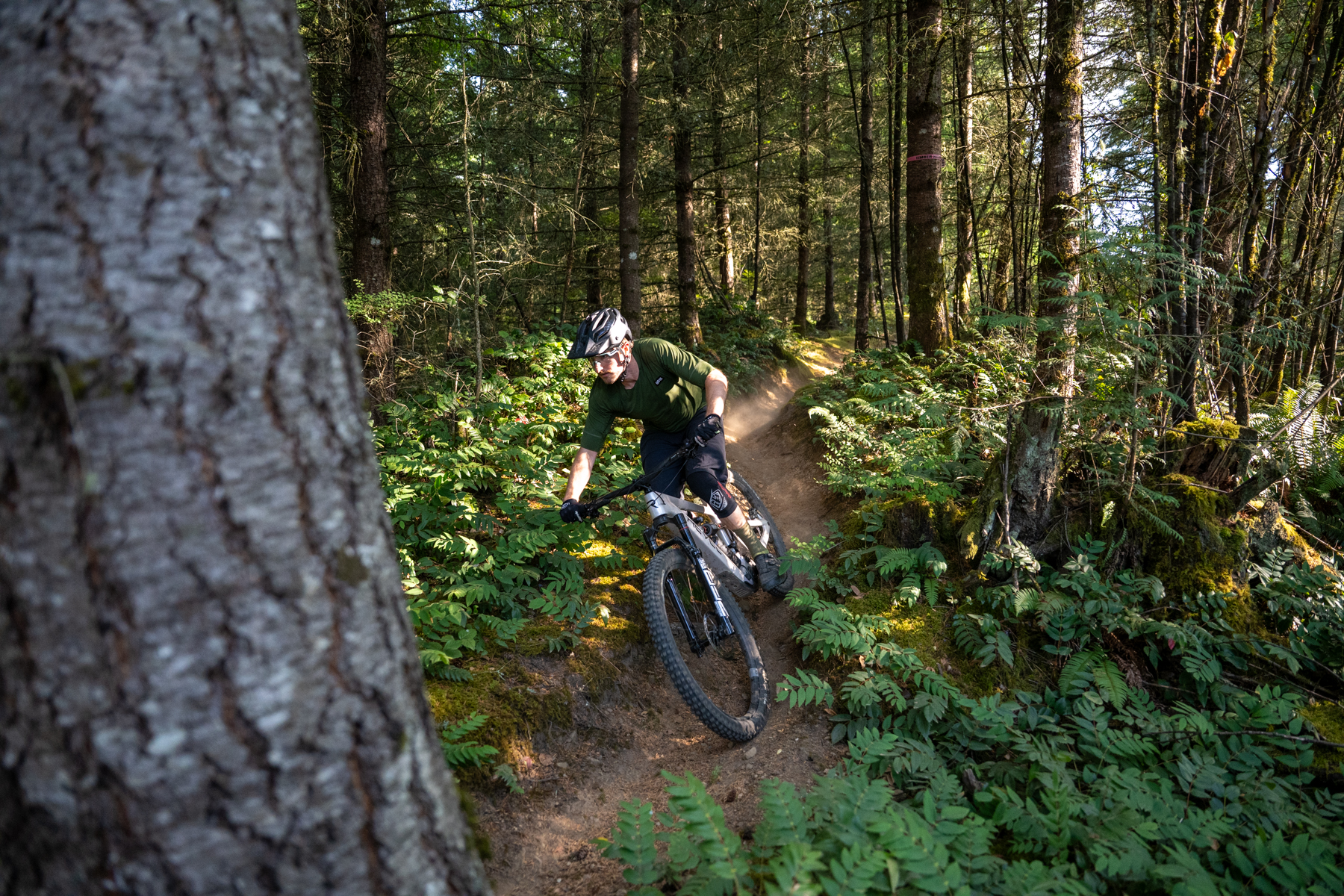
Bottom Line
Convex and concave pedals each have their place, but OneUp has done a convincing job combining the two with the Wave. While they lean more into the traits of convex pedals in a lot of ways, they seem to bring more grip than many fully convex designs can offer. They can’t quite match the locked-in feel of the most aggressive concave pedals out there, but for folks that like a supportive-feeling pedal that balances grip and ease of foot adjustment, they’re excellent. Thanks to their quality construction and thoughtful axle design, they should last for the long haul, too.

Remarkably similar to the Canfield Crampon pedals. Not a bad thing, as I love the Crampons, but still very similar.
If we draw a line between the contact points of these (each pin, pedal body at the spindle) do we just end up with a straight line anyhow? Will these feel like a flat pedal that just looks angled?
The platform shape should end up dictating the feel a whole lot more than the pins do. The main idea here seems to be letting the ball of your foot nestle into the cambered pocket at the forward part of the pedal, while the convex rear section supports the arch more naturally than a convex shape might. I’m expecting the Waves to feel pretty different as compared to more traditional designs. Our set just showed up today, so I’ll put that theory to to test soon.
I’m hoping that’s the end result: concave pocket at the ball of the foot without that harsh ridge under the arch. I’m excited to see the results!